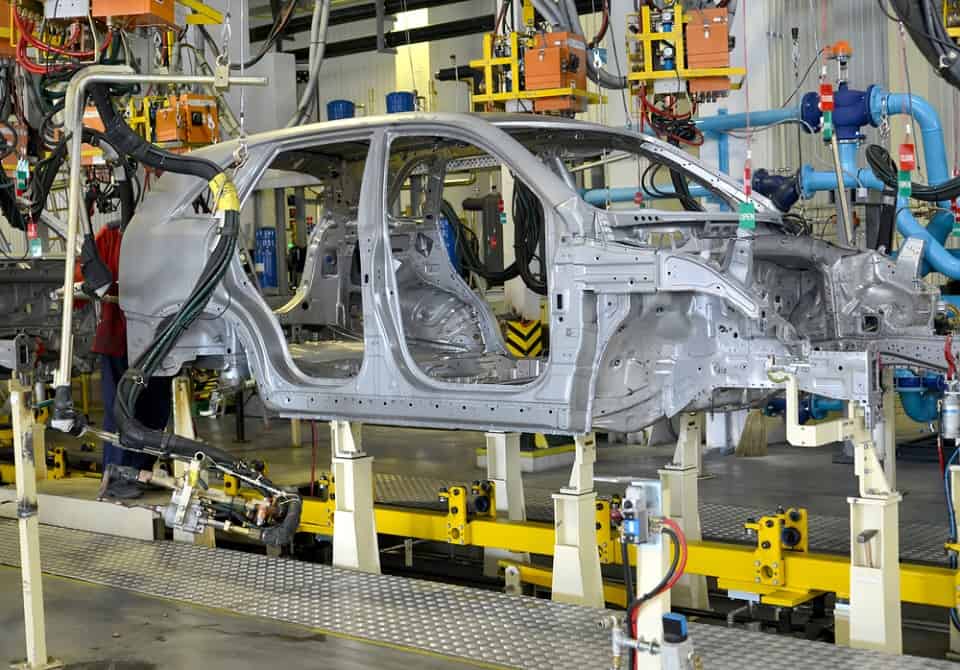
A key line item in this method is the adjustment for under or over-absorption costs. These costs may need adjustments if the total fixed overheads and absorbed overhead costs are different. The ending inventory amount will be different for a company using absorption costing than by using marginal costing that only considers variable costs. For external reporting purpose, Albari must use a finished goods inventory figure computed on the basis of absorption costing system. We can determine the absorption costing ending inventory figure by first determining the unit product cost under absorption costing approach and then multiplying the same by the number of units in the ending inventory. The choice of method depends on the industry and the nature of the production process.
- In the automobile industry, it is utilized to calculate the total cost of manufacturing vehicles.
- Unlike the marginal costing method, absorption costing allocates full costs of production to the per unit analysis.
- If you’re looking for tools to simplify these processes and gain better control over your product costing, consider exploring the Intuit Enterprise Suite.
- Variable costing is a form of cost accounting in which only variable costs are included in calculating cost per unit.
- Absorption costing is a crucial managerial accounting method that captures all manufacturing costs involved in producing a product.
- However, businesses should carefully assess its impact on reported income and inventory levels, particularly when making internal management decisions.
- Absorption costing can skew a company’s profit level due to the fact that all fixed costs are not subtracted from revenue unless the products are sold.
Method # 4. Direct Labour Hour Method:

Standard costing involves setting predetermined costs for products and services, based on estimated prices of resources and manufacturing efficiency. Standard costing excludes fixed manufacturing overhead as a production cost. By contrast, absorption costing includes some fixed manufacturing overhead costs to match product sales in a period. It also shifts the cost of unsold goods to inventory on the balance sheet until they’re sold in future periods. The key distinction between absorption costing and variable costing lies in the treatment of fixed manufacturing overhead.

Example 1: Units Produced Method
- With absorption costing, the costs calculated for those unsold units (including their share of fixed costs like factory rent) remain attached.
- With absorption costing, gross profit is derived by subtracting cost of goods sold from sales.
- Overhead Absorption is achieved by means of a predetermined overhead abortion rate.
- Regularly updating this rate ensures that overhead costs are appropriately assigned to each unit, maintaining cost accuracy as production levels change.
- The following income statements present information about Nepal Company.
Base usage on quantity or activity—for example, square feet of cloth, hours of labor, watts of electricity, and gallons of water. For example, total factory labor costs against the total number absorption costing formula of units manufactured. This method includes labour and material costs and also fixed and variable manufacturing overhead costs. This article will provide you with the absorption costing formula and discuss its advantages and disadvantages and how it is different from variable and marginal costing.

How to Handle Taxes & Compliance in Multiple Jurisdictions for Subscription & Rental Businesses

Absorption costing can skew a company’s profit level due to the fact that all fixed costs are not subtracted from revenue unless the products are sold. By allocating fixed costs into the cost of producing a product, the costs can be hidden from a company’s income statement in inventory. Hence, absorption costing can be used as an accounting trick to temporarily increase a company’s profitability by moving fixed manufacturing overhead costs from the income statement to the balance sheet.

Apportionment of Fixed Manufacturing Overhead
Absorption costing, also known as full costing, is an accounting method that allocates all manufacturing costs—both fixed and variable—into the cost of a product. In financial accounting, absorption costing is crucial for determining the total cost of producing bookkeeping a product, which includes direct costs like materials and labor, as well as indirect costs such as overheads. This method is used to prepare financial statements that comply with generally accepted accounting principles (GAAP) or international financial reporting standards (IFRS). Understanding absorption costing in financial accounting helps businesses ensure accurate financial reporting, cost allocation, and pricing strategies.
- (1) When material forms major part of total cost, time factor is ignored.
- For example, if you are manufacturing a product that takes two hours to produce and have one worker paid $10 per hour, the labor cost for that activity would be $20.
- It works by totaling all the manufacturing costs for a period and dividing that sum by the total number of units manufactured during that same time frame.
- This may show unaccounted-for costs on the company’s income statement while showing profitability on the balance sheet.
- As the COGS will be higher in this method, the gross profits will be lower.
- Evaluate your fixed overhead allocation base (e.g., labor vs. machine hours) periodically.
- Fixed manufacturing overhead costs remain constant regardless of the level of production.
- As goods held in inventory are sold in subsequent quarters, the past cost of those goods is recorded in subsequent income statements to match those sales.
- For directors aiming to maintain tight control over inventory management, this approach aligns with the matching principle; it matches expenses directly to revenues within the appropriate period.
- This method ensures that every item carries a portion of the indirect costs like utilities, property taxes, or depreciation on equipment.
- Finally, to find the COGS, multiply the absorption cost per unit by the number of motors sold during the month.
- In this case, the fixed overhead per unit is calculated by dividing total fixed overhead by the number of units produced (see absorption costing post for details).
This costing method treats all production costs as costs of the product regardless of fixed cost or variance cost. It is sometimes called the full costing method because it includes all costs to get a cost unit. Those costs include direct costs, variable overhead costs, and fixed overhead costs. The key distinction between Suspense Account absorption costing and variable costing is how fixed overhead costs are treated.
